| Product # | 239140 |
| Brand | Strymon |
| Category | Tremolo Pedal |
| Brand Category | Strymon - Tremolo Pedals |
Recommended accessories
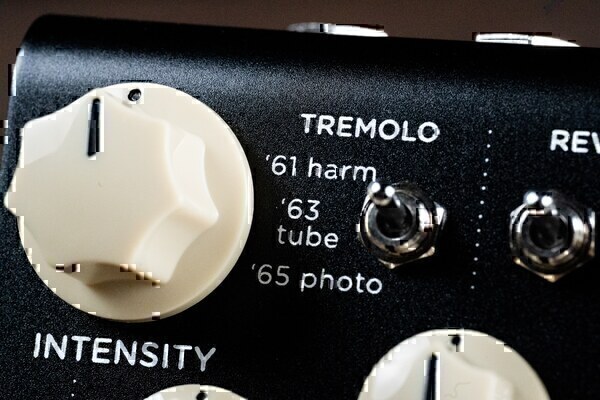
A Unique Rarity
The ’61 Harmonic Tremolo is somewhat rare due to its very short period of availability in tube amplifiers in the early 1960s. It gets its signature sound through a dual-band filtering effect that alternately emphasizes low and high frequencies. The end result is a soothing pulse that has shades of a mild phaser effect combined with tremolo, due to the nature of the frequency bands that are alternated.

Totally Tubular
The ’63 Power Tube Tremolo utilized the LFO signal to directly influence the power tube bias of the amplifier’s push-pull output stage. The power tubes are biased into lower and higher idle currents, creating the fluctuating gain that produces the tremolo effect. The effects of crossover distortion at low tremolo volumes, increased power tube harmonic distortion at maximum tremolo volumes, as well as the influence of power-supply sag, all add up to the boggy and dirty nature of this tremolo circuit.
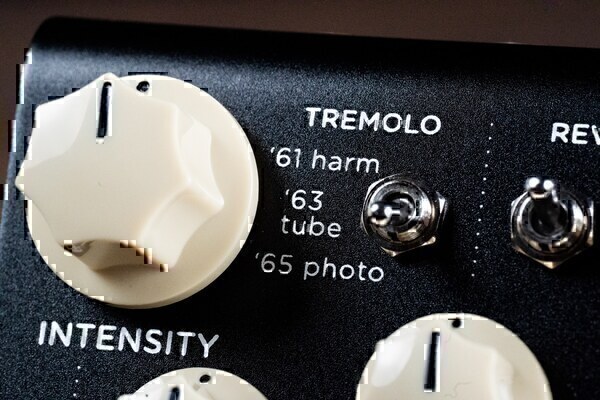
Get To The Chopper
The ’65 Photocell Tremolo is a faithful recreation of the classic photo-trem circuits found in mid-1960s American amplifiers. Those classic circuits used a light-dependent resistor (LDR) to attenuate the input signal, coupled with a miniature neon bulb that is connected to the LFO. As the LFO oscillates, the bulb gets brighter and dimmer which in turn varies the resistance of the LDR. The varying resistance works with other circuit impedances to change the signal level, which produces a characteristically “hard” sounding tremolo that moves between two levels, reminiscent of a square wave.
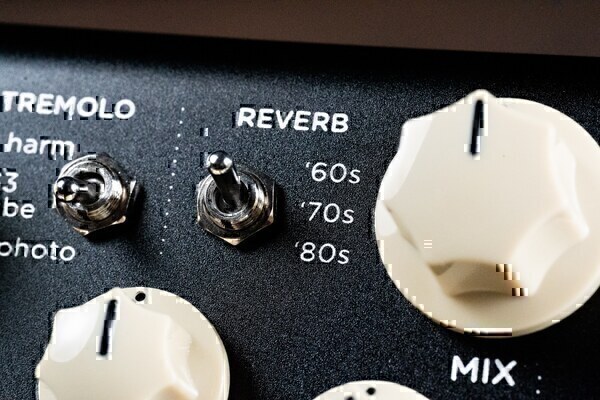
Sixties Surf
The ’60s Spring Tank Reverb is our faithful recreation of the full-size two-spring tank that was commonly used in vintage amps. The two-spring tank uses spring segments of differing delay times, which adds to the complexity of the reverberated sound. Contributing greatly to the sound are the input and output tube circuits which convert the electrical guitar signal into a mechanical signal and then back to an electrical signal.

Sound Of The Seventies
The ’70s Electronic Plate Reverb pays homage to one of the earliest digital reverbs ever created. The astounding hardware-based algorithm used multiple delay-lines configured in parallel, with each delay featuring multiple output taps and filtered feedback paths. The result is a rich, smooth reverb with a very quick build-up in density due to the summation of the many parallel output taps.
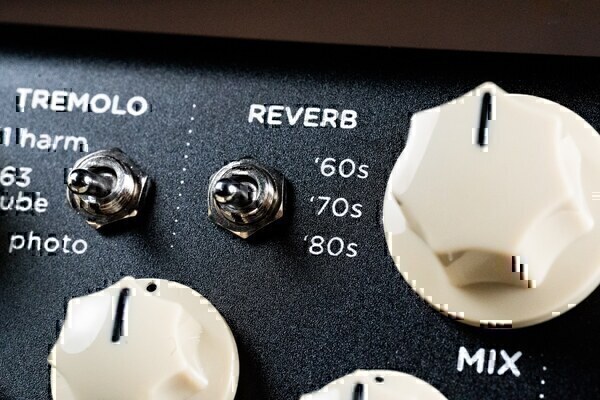
Totally Eighties
The ’80s Hall Rack Reverb is our rendition of the now-nostalgic digital microprocessor rack reverbs from the late ’80s. The limited processing power of the day led to the implementation of efficient regenerative series loops of all-pass filters, delays, and low-pass filters. Modulating delay lines were used to increase the reverb density and add warmth. This reverb provides the signature sound of distinctive early reflections followed by the slowly-building density of the late reverberation.
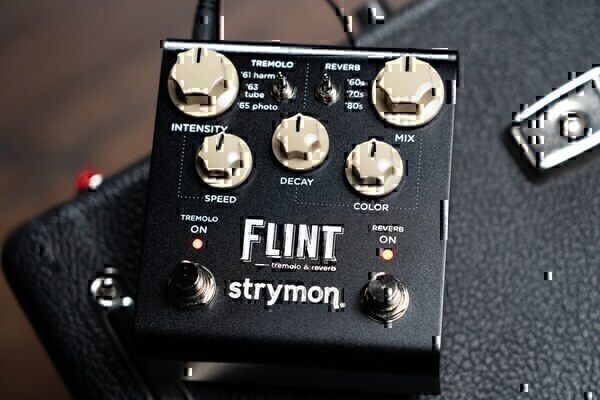
Switch Things Up
Want to run your reverb intro tremolo like your favorite vintage tube amps did? Or do you prefer modulation before reverb for a cleaner, modern tone? Flint gives you options for both with an Effect Order secondary function that lets you choose exactly how you want your reverb and tremolo routed for ultimate tonal control. This setting is accessible as a Live Edit secondary function and is savable per-preset.
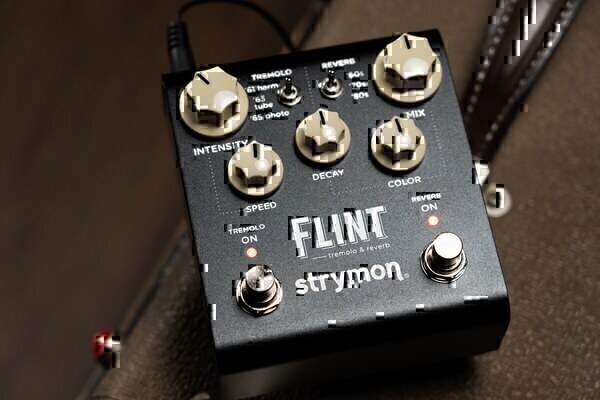
Add Some Space
Pre-Delay controls the delay time before the reverberated signal appears, and is now accessible as a Live Edit secondary function, savable per-preset.
- - High impedance ultra low-noise discrete Class A JFET TRS stereo input.
- - Low impedance independent TS stereo outputs.
- - Expression pedal input allows the connection of a TRS expression pedal, MiniSwitch, MultiSwitch Plus, or TRS MIDI connection.
- - USB jack for controlling via MIDI from a computer or for performing firmware updates.
- - Dedicated Reverb On/Off & Tremolo On/Off footswitches
- Ultra low noise, high performance 24-bit 96kHz A/D and D/A converters provide uncompromising audio quality
- 520MHz ARM Superscalar processor
- 32-bit floating point processing
- 20Hz to 20kHz frequency response
- Audio Input Impedance: 1M Ohm
- Audio Output Impedance: 100 Ohm
- Strong and lightweight anodized black aluminum chassis
- 9V DC power supply included
- Power requirements: maximum 9 volts DC center-negative, with a minimum of 300mA of current
Dimensions:
4.5” deep x 4” wide x 1.75” tall
11.4 cm deep x 10.2 cm wide x 4.4 cm tall
Designed and built in the USA
| Tremolo Pedal attributes | |
|---|---|
| Unit | 1 piece(s) |
| Product Details | |
|---|---|
| Product Number | 239140 |
| Brand | |
| Category | |
| Brand Category | |
| Relevancy rank in Category Tremolo Pedal | |
| Date | July 2022 |
| Dimension | |
|---|---|
| Box Depth | 230mm |
| Box Height | 135mm |
| Gross Weight | 0.78kg |
Reviews
View different language product reviews (2)
All I can say is, buy this. Sounds great, very compact and easy to use, but if you are in to midi, it works great too. It will never come off my board.
Had the original Flint and it was great.. lower tremolo speeds sound very creamy, foot switch settings are kept through power cycles, (less tap dancing) pre amp section seems warmer... Can highly recommend the upgrade...